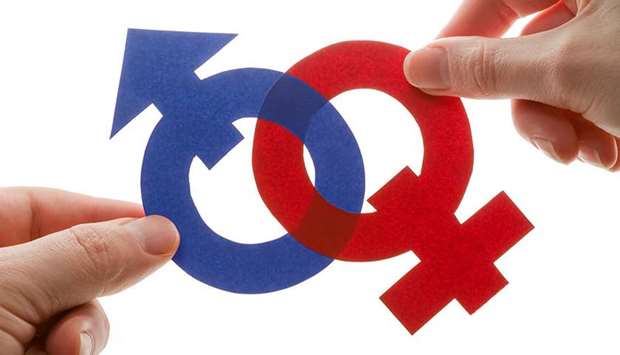Healthcare has remained one of the key issues that divides Democratic and Republican voters in the US, according to Dr Jeffrey M Stonecash, an expert on political parties.
The distinguished professor emeritus of political science at the Maxwell School of Citizenship and Public Affairs at New York’s Syracuse University was addressing a recent press briefing as part of the first-ever Virtual Reporting Tour (VRT) of the US and the American electoral process.
“Healthcare has been an issue for quite a while. Harry Truman, in the late 1940s, tried to establish a national healthcare system. It was met with strong resistance.
“In the mid-90s, Bill Clinton tried to establish national healthcare system, and he failed because he ran into Republican opposition, and then (Barack) Obama got it passed by one vote in 2010,” recalled Stonecash.
The academic provided a brief overview of the two-party system in the US and discussed major differences between the Republican and Democratic parties.
“It (healthcare) is both philosophical and practical. Philosophically, conservatives think everybody ought to get their own insurance … you're on your own. They're strongly committed to you getting it on your own,” he said.
“They don't want a national healthcare system, and they don't want it for two reasons.
“One, they think it costs too much in terms on the private sector.
“And their biggest fear is that it creates a social welfare benefit to people that would tie people to the Democratic party because the Democratic party enacted it,” Stonecash pointed out.
“And so they want it repealed. They have been trying for 10 years to repeal it. It came very close in 2017, but it's a fundamental issue in America. Some people really feel incredibly vulnerable because they have no health insurance,” he noted. “Others think, ‘You're on your own. Go get a good job and that'll pay for your healthcare’. It's a real deep issue, and division about that.”
About the role of women in the evolution of political parties, Stonecash said that the US went through a thorough gender gap development in the past 30 years.
“It used to be that men and women did not vote terribly differently, but now, or beginning in the 1980s, men began to vote more Republican.
“Women sometimes moved with them, but on average, did not.
“What we now have is a pretty significant gap in that women tend to go to the Democratic party, (though) not all of them,” he said.
“Women in this particular election are going to play a very crucial role because (Republican President Donald) Trump has alienated many women with his behavioural style, his language, his harshness, and his crassness. His biggest problem right now is women,” Stonecash pointed out.
“In some elections, women play a very pivotal role. Looks like they will in this one. In others, they are not. But there has been this big gap between men and women. Largely it's because men moved away from the Democratic party,” he added.
Stonecash also discussed other key issues where the two parties clash and form the basis of their conflict: economic individualism and the role of government, race and cultural matters, and immigration.
The US Department of State, in collaboration with the Meridian International Centre, has organised the eight-week VRT programme for more than 225 journalists from across the world to cover the upcoming US elections remotely.
“Healthcare has been an issue for quite a while. Harry Truman, in the late 1940s, tried to establish a national healthcare system. It was met with strong resistance.
“In the mid-90s, Bill Clinton tried to establish national healthcare system, and he failed because he ran into Republican opposition, and then (Barack) Obama got it passed by one vote in 2010,” recalled Stonecash.
The academic provided a brief overview of the two-party system in the US and discussed major differences between the Republican and Democratic parties.
“It (healthcare) is both philosophical and practical. Philosophically, conservatives think everybody ought to get their own insurance … you're on your own. They're strongly committed to you getting it on your own,” he said.
“They don't want a national healthcare system, and they don't want it for two reasons.
“One, they think it costs too much in terms on the private sector.
“And their biggest fear is that it creates a social welfare benefit to people that would tie people to the Democratic party because the Democratic party enacted it,” Stonecash pointed out.
“And so they want it repealed. They have been trying for 10 years to repeal it. It came very close in 2017, but it's a fundamental issue in America. Some people really feel incredibly vulnerable because they have no health insurance,” he noted. “Others think, ‘You're on your own. Go get a good job and that'll pay for your healthcare’. It's a real deep issue, and division about that.”
About the role of women in the evolution of political parties, Stonecash said that the US went through a thorough gender gap development in the past 30 years.
“It used to be that men and women did not vote terribly differently, but now, or beginning in the 1980s, men began to vote more Republican.
“Women sometimes moved with them, but on average, did not.
“What we now have is a pretty significant gap in that women tend to go to the Democratic party, (though) not all of them,” he said.
“Women in this particular election are going to play a very crucial role because (Republican President Donald) Trump has alienated many women with his behavioural style, his language, his harshness, and his crassness. His biggest problem right now is women,” Stonecash pointed out.
“In some elections, women play a very pivotal role. Looks like they will in this one. In others, they are not. But there has been this big gap between men and women. Largely it's because men moved away from the Democratic party,” he added.
Stonecash also discussed other key issues where the two parties clash and form the basis of their conflict: economic individualism and the role of government, race and cultural matters, and immigration.
The US Department of State, in collaboration with the Meridian International Centre, has organised the eight-week VRT programme for more than 225 journalists from across the world to cover the upcoming US elections remotely.


